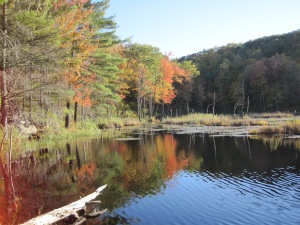This summer began with a new development in my home garden: after the first few years of shade-gardening with native plants, a light-gap has opened in the woods from a tree falling last year, allowing me to finally pursue a dream of vegetables. My husband and I put in the small, square raised bed; I planted a modest selection of tomato, cucumber, and bell pepper plants; and we fenced it in for protection from ever-present, hungry wildlife.
The first lesson I am confronting is patience.
I believe the seemingly contradictory qualities of impatience and distraction are responsible for my long history of a black thumb. Sometimes I smother my plants with eager watering and prodding; other times, I forget my charges, and they wither from neglect. I have begun to see that vegetables are delicate; if I want any kind of yield, I have to be diligent but not clingy.
Still, as I water them daily, I purse my lips and examine the stalks (gently!) for signs of new flowers.
I also have newfound gratitude for rain. I have always loved rainy days almost more than sunny ones, but rain takes on new meaning now, a direct sign of divine providence. “No need to water today!” I think, with a sigh of contended relief. It’s work lugging the big watering can up to the light gap, far from the hose’s reach.
All this watering gives me greater respect than ever for our crops’ tremendous strain on resources. Just seeing the daily amount my four plants require easily paints a picture in my mind of that amount magnified across our groaning planet. And it occurs to me that all of us, whether omnivore or carnivore, vegetarian or vegan, should be humbled by what it takes to provide for our needs on a daily basis.
Who knew such lessons await in such humble, green places?






